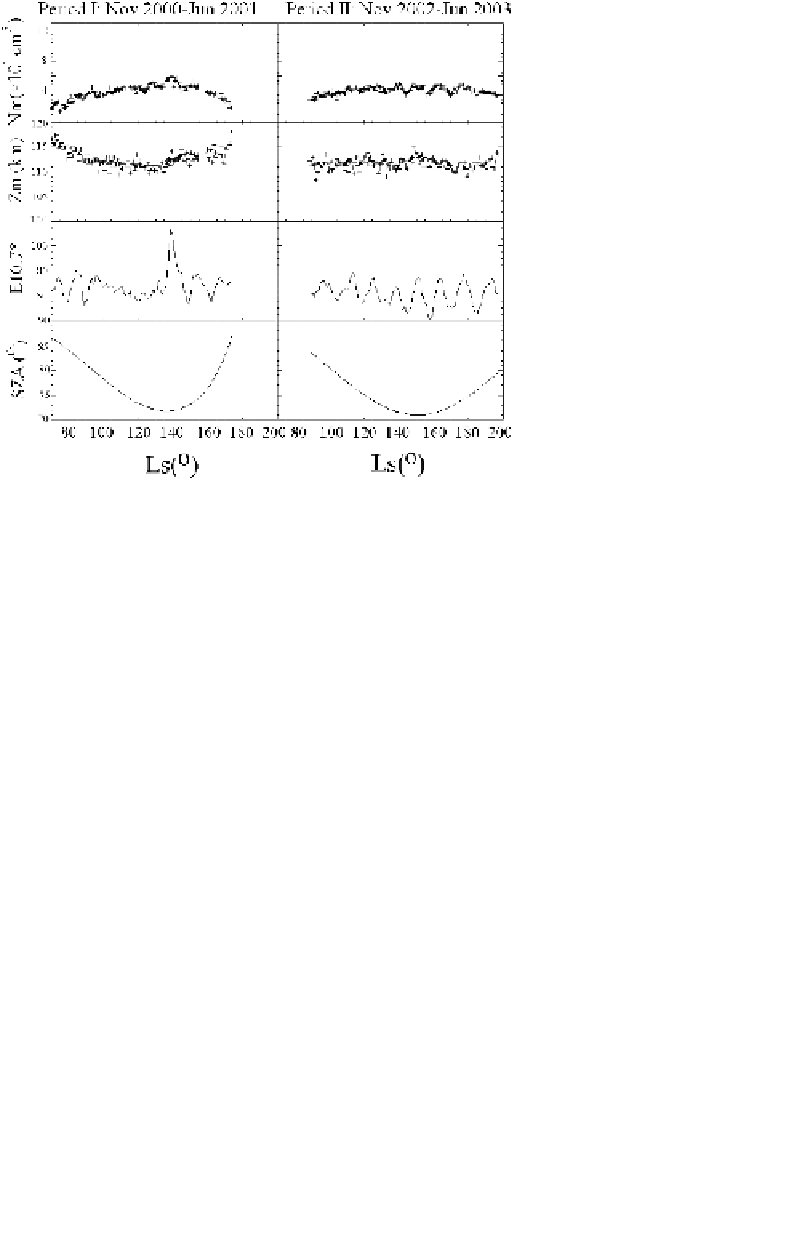Geoscience Reference
In-Depth Information
Fig. 3. The peak density and peak height of the secondary layer, the corresponding
E10.7
∗
and solar zenith angle (SZA) versus the solar longitude (
L
s
, used herein as the
proxy of time).
considering the locations of both planets and the rotation speed of the Sun.
For example, at the time of observation Mars was located about
x
degrees
away from the Earth in the direction of their orbital motion, then the date
of E10.7* is equal to the date of E10.7 plus (
x
/360)
27 days, where 27
is the average period of solar rotation. The maximum correction for the
two used datasets is
×
13 days (when the Earth and Mars nearly oppo-
site), i.e., half of a solar rotation period. Possible individual variation of
the solar radiation with time scale less than one solar rotation period will
not influence the statistic analysis for nearly half year. The attenuation
of the solar radiation from the Earth's orbit (
∼
∼
1 AU) to the Mars' orbit
1.6 AU) can be corrected by the law of 1
/r
2
with the measured Sun-
Planet distances (
r
). The left column in Fig. 3 is for period I, and the right
column is for period II.
It can be seen that other than the SZA dependence shown in Fig. 2,
there are still obvious variations of shorter time scale, especially the posi-
tive correlation between the peak density and E10.7*, while no prominent
correlation exists between the peak height and E10.7*.
(
∼









